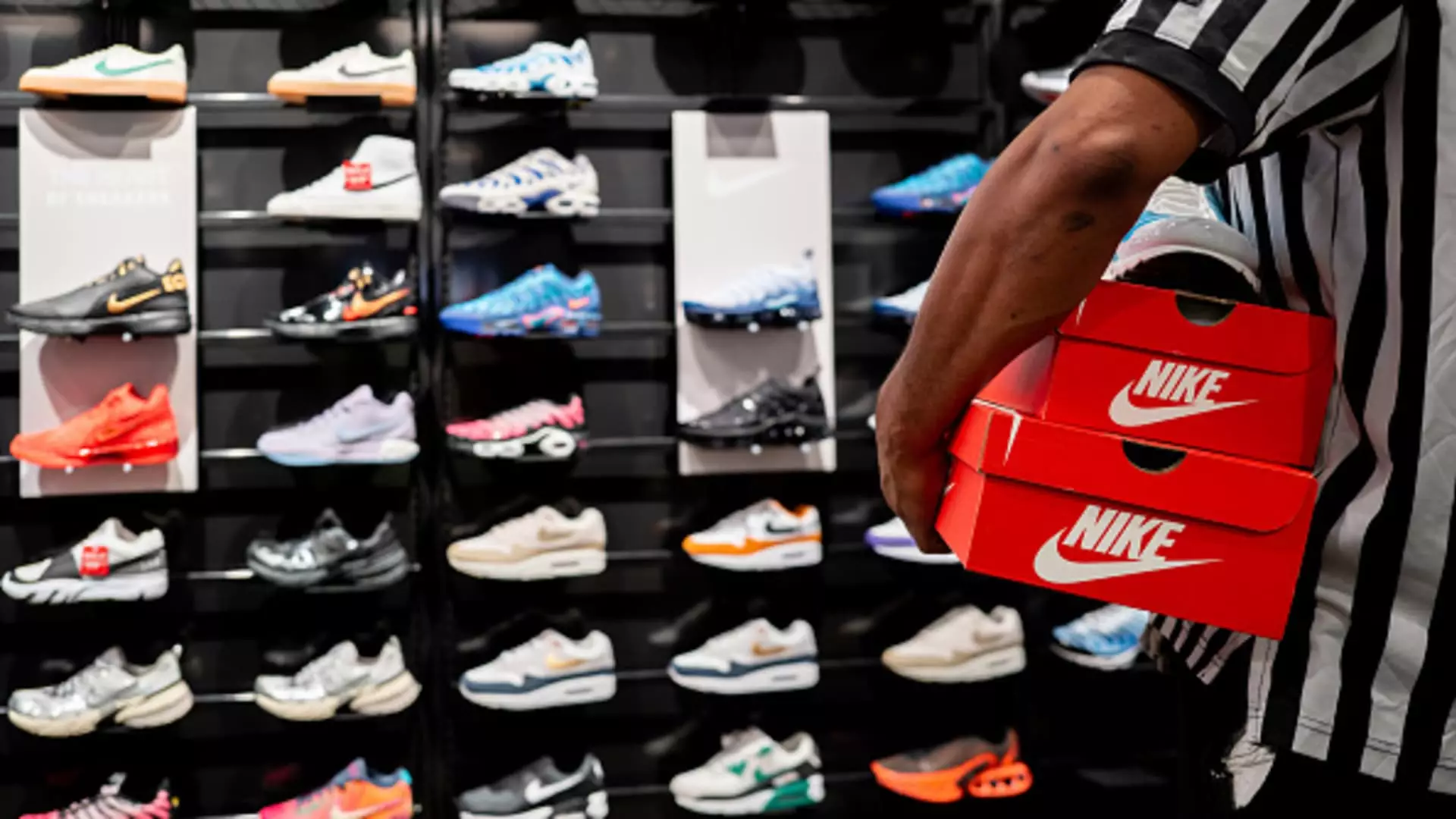As Nike prepares to unveil its fiscal first-quarter earnings report, investors are poised for potentially disappointing figures. Analysts project a sharp decrease in both revenue and profit, with expectations of earnings per share hitting 52 cents and total revenue reaching approximately $11.65 billion. This marks a staggering anticipated decline of 10% in sales compared to the previous year and a looming 45% decrease in profits. Such forecasts paint a bleak picture for a company that has long dominated the athletic footwear market.
The anticipated downturn can largely be attributed to Nike’s recent strategic missteps. Over the past year, the brand has faced criticisms for falling behind on innovation and losing market share to competitors. While Nike has shifted its focus toward direct consumer sales through its own channels — including e-commerce and physical stores — it may have inadvertently neglected vital partnerships with traditional retailers like Foot Locker. This pivot towards DTC (direct-to-consumer) strategies has raised questions about Nike’s ability to maintain its competitive edge in a rapidly evolving market.
In a notable leadership shakeup, CEO John Donahoe has announced his departure, with industry veteran Elliott Hill slated to take over on October 14. Donahoe’s tenure has been marked by a significant 31% increase in annual sales, yet this growth has been primarily driven by the release of established sneaker lines such as Air Force 1s and Dunks, rather than by innovation. This reliance on legacy products has led to concerns that Nike is becoming stagnant, cycling through familiar offerings rather than pushing the boundaries of footwear design.
As Donahoe transitions out, analysts and investors will be closely watching how Hill approaches his new role. Having spent 32 years with Nike before his retirement in 2020, Hill brings with him a wealth of experience that could be crucial in reinvigorating the company’s product development and restoring relationships with key retail partners. However, whether Hill can navigate these challenges successfully remains to be seen.
A core responsibility for Hill will be to reignite Nike’s innovation pipeline. Previous assertions from the company’s leadership indicated a recognition of the need to innovate more effectively and enhance relationships with wholesalers. Yet, the urgency of this directive has only intensified in light of recent struggles concerning both consumer engagement and retailer partnerships. A rejuvenated product line could be instrumental in capturing a broader audience and increasing market share.
The current landscape for athletic footwear sales appears grim as well, with US consumer spending on discretionary items like shoes reflected in an anticipated growth of only 2% in the footwear sector for 2024. Nike’s performance in the burgeoning Chinese market, the brand’s third-largest revenue generator, will also be crucial to observe. While the latest data indicates caution in that market, recently announced stimulus measures from China’s central bank might signal a potential recovery. Despite this, it remains uncertain whether Nike’s fiscal performance will align positively with these macroeconomic shifts.
As investor sentiment continues to waver, Nike has witnessed a notable decline in its stock value, plummeting nearly 19% in 2024 alone, which starkly contrasts with the S&P 500’s 21% gains. This underperformance raises critical questions regarding investor confidence and the effectiveness of Nike’s current strategic orientation. Given the broader trends in consumer habits and economic uncertainty, the stakes are high for the company moving forward.
When the quarterly earnings call occurs, all eyes will be on both Donahoe’s exit and Hill’s future strategy. Observers will be looking for signals hinting at how Nike intends to confront these multifaceted challenges and whether actionable steps are being taken to revitalize its presence in the market. Only time will determine if this historic footwear giant can regain its footing in an increasingly competitive and demanding marketplace.

